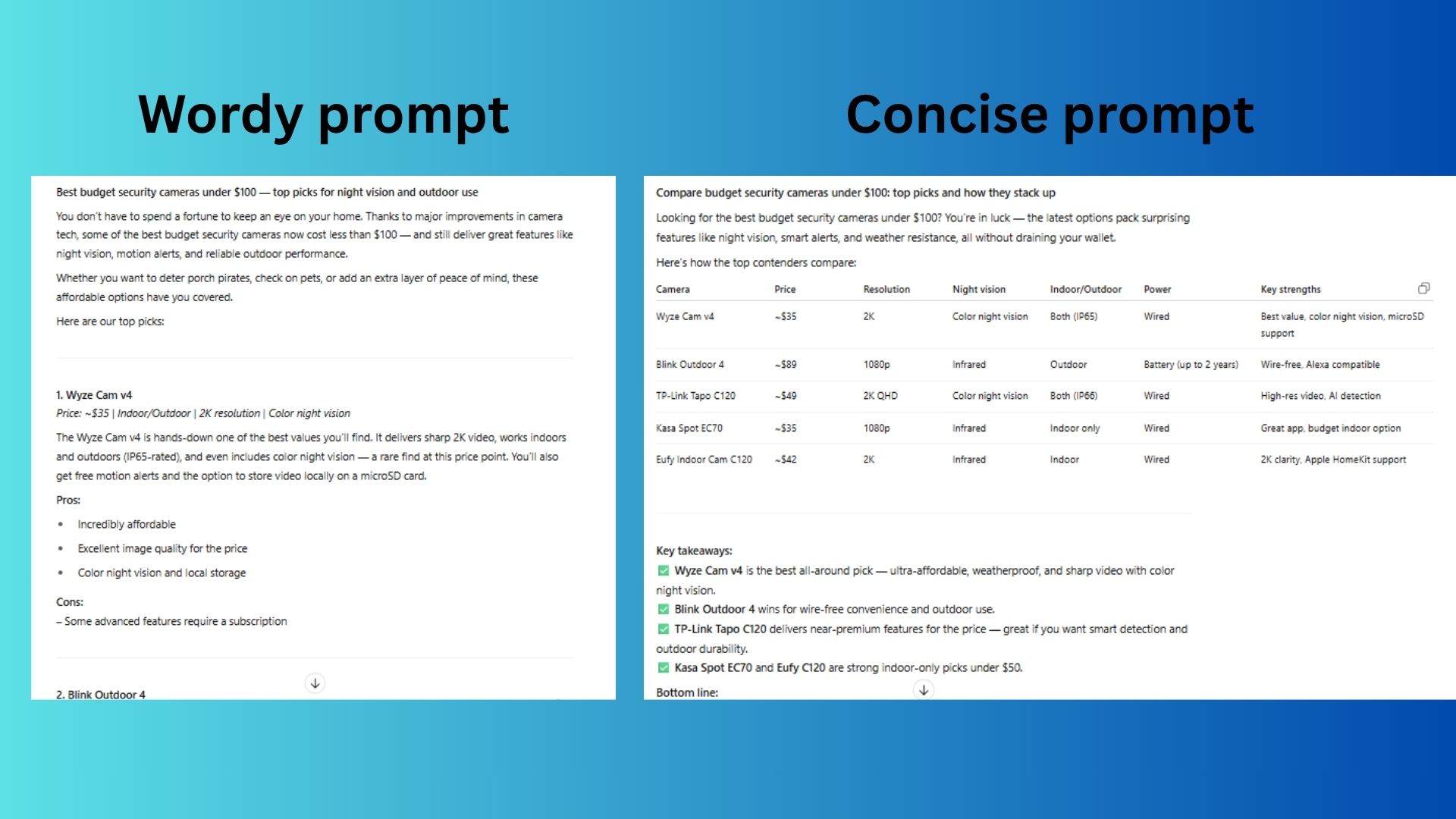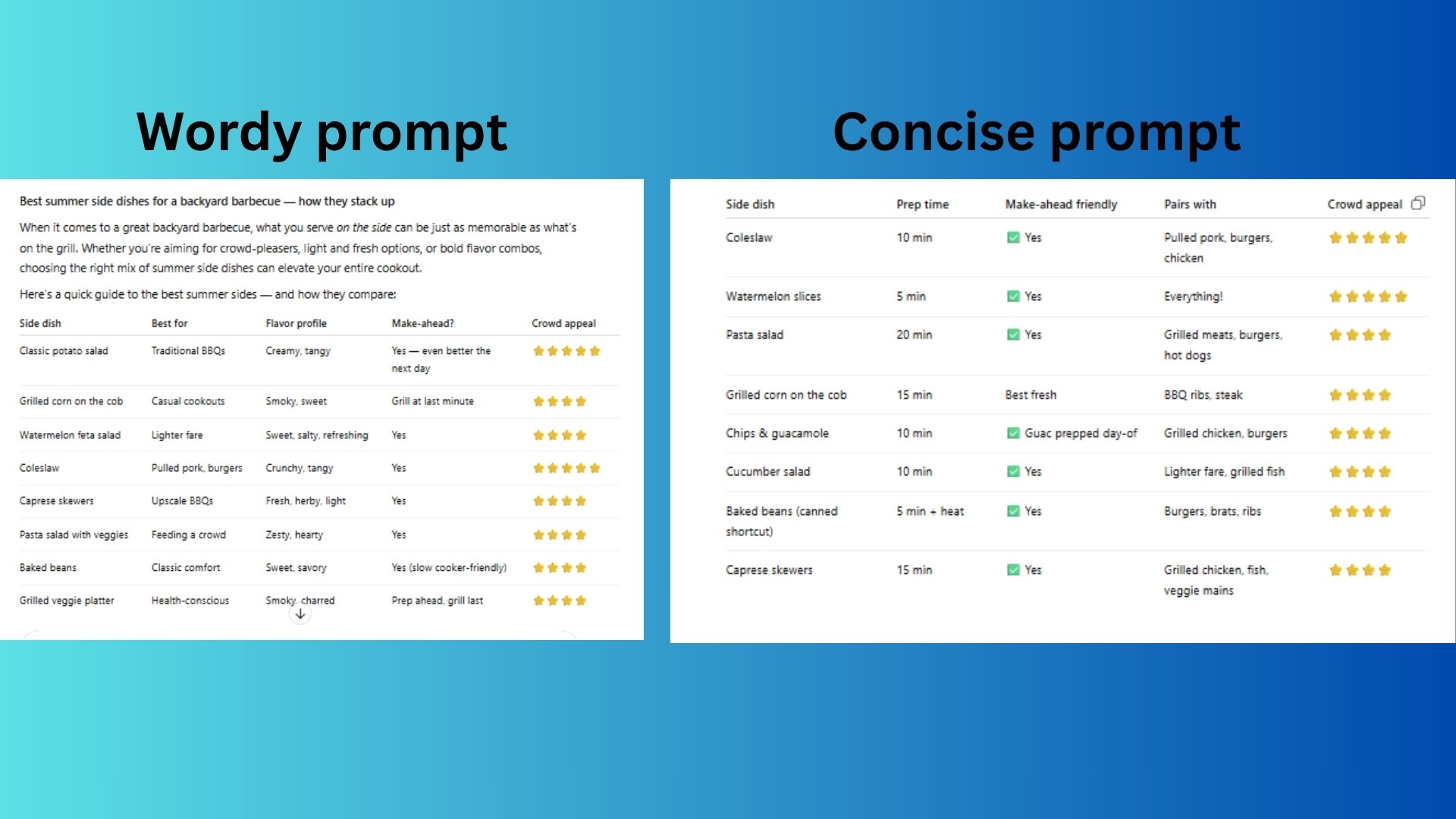Master ChatGPT Prompts Three Tips For Superior Responses
 (Image credit: Shutterstock)
(Image credit: Shutterstock)
Many ChatGPT users, from novices to experts, fall into the trap of writing overly long prompts. This often involves over-explaining to the intelligent chatbot or including details that are simply counterproductive.
Initially, like many, I believed adding extra details or using perfect grammar would ensure ChatGPT understood me. However, this is a common beginner's mistake, as chatbots excel at grasping context.
Here’s a crucial insight: an overly wordy prompt can often cause the chatbot to miss the point. That's why extremely concise prompts, sometimes as short as three words, are surprisingly effective. When instructing your chatbot, remember that less is more; short, command-style prompts of 5 to 7 words usually yield the best results.
Embrace Brevity Shorter Prompts Lead to Success
 (Image credit: Future)
(Image credit: Future)
Consider this wordy prompt: "Can you help me by writing an article about the best budget security cameras under $100, including some models that have night vision and work well for outdoor use?"
Now, a concise alternative: "Compare budget security cameras under $100."
The outcome of verbose prompts is often bloated, generic answers that miss the core request. According to the 2024 AI Index from Stanford and OpenAI:
- Short prompts (under 12 words) demonstrate 22% higher accuracy
- Responses are 40% faster
- There are fewer “I don’t know” or incomplete replies
My own tests consistently show that short prompts deliver sharper, more focused answers.
Use Action Verbs for Clear Direction
 (Image credit: Future)
(Image credit: Future)
Instead of a lengthy request, begin your prompt with a clear action verb. Some powerful options include:
- Summarize
- Compare
- Rewrite
- List
- Explain
This immediately tells ChatGPT your objective, eliminating guesswork and reducing potential errors.
Less effective prompt: "Can you help me compare the best summer side dishes for a backyard barbecue?"
More effective prompt: "Compare easy side dishes for a backyard barbeque."
You'll notice the shorter, action-oriented prompt produces better, more focused results. While users have grown accustomed to 'chatting' with their chatbots, for many tasks, this verbosity is unnecessary.
Refine Iteratively Add Constraints Step by Step
 (Image credit: Shutterstock)
(Image credit: Shutterstock)
Rather than cramming all requirements into one massive prompt, build your answer progressively.
First prompt: “List 3 popular types of running shoes.” Follow-up: “Now include only brands under $150.” Next: “Summarize their best features.”
This iterative approach creates a natural conversational flow and makes it easier to refine your request as you go.
Bonus Tip Chain Simple Prompts for Complex Tasks
Avoid the common pitfall of overstuffing prompts with a straightforward fix.
Instead of this complex prompt: "Explain quantum computing like I’m 12, using metaphors but not oversimplifying, and include real-world applications."
Try this prompt chain: "Define quantum computing in one sentence." "Now add a metaphor." "Give 3 use cases."
By chaining simple prompts, you'll receive clearer, more accurate results and sidestep those frustrating "As an AI, I can’t..." replies.
When Detailed Prompts Are Still Valuable
 (Image credit: Shutterstock)
(Image credit: Shutterstock)
Of course, there are situations where longer, more detailed prompts are beneficial, particularly for creative endeavors:
- Roleplaying: “Act as a sarcastic IT expert diagnosing my slow PC.”
- Creative writing: “Write a noir story about a hacker in 1995.”
- Style matching: “Imitate Hemingway’s style to describe a sunset.”
In these instances, extra detail helps the AI adopt the correct tone, perspective, or persona.
The Takeaway Simplify for Better AI Interactions
Since implementing these three simple rules, I've saved considerable time on rewriting prompts and have received higher-quality responses with significantly fewer frustrations.
Nothing is more irksome than an incomplete response or when the AI provides off-topic replies. If you've ever received a response that refers to an earlier, unrelated conversation, you understand. This shorter prompt strategy can help fix that too.
In essence, get straight to the point with your prompts. Start simple and build on your request. Then, sit back and watch your results improve.
What’s the shortest prompt that has ever yielded genius results for you? Share it in the comments — I’d love to give it a try!


